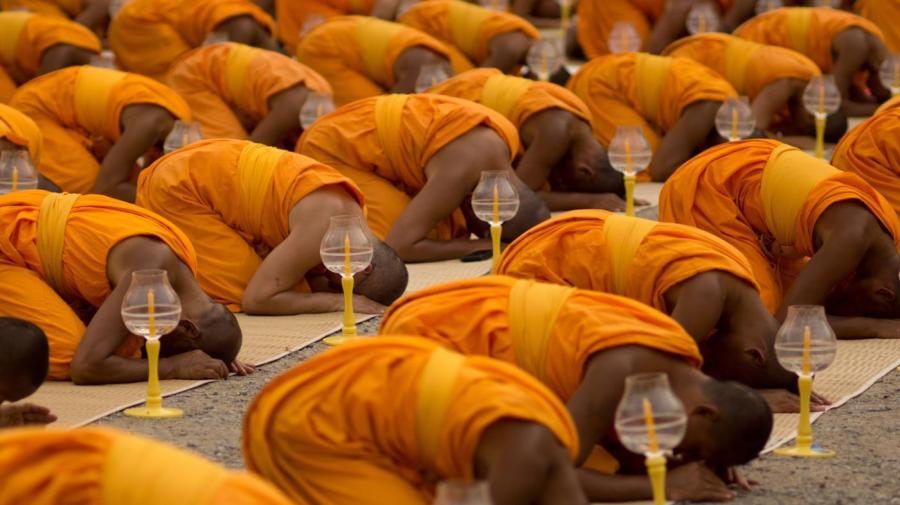Why Do Buddhists Wear Orange Robes?

Buddhists wear orange robes today because ancient Buddhist monks also wore orange robes. In Buddhist religious texts, the color orange is not symbolic. Before modern innovation, the color Buddhist robes were dyed was determined based on the natural plant dyes that were available. According to Buddhist Studies, the familiar orange dye derived from the heartwood of the jack-fruit tree in northeast Thailand.
While the color orange is not symbolic for Buddhist monks, the tradition of wearing orange has maintained prominence in the East. Contemporary monks wear synthetically dyed orange robes in honor of the memory of their ancient brothers in Southeast Asia. In other parts of the world, the robes worn by Buddhist monks are different colors. For example, Tibetan Buddhist monks wear burgundy robes. Also, white robes are often worn on special observance holidays.
The robe is significant to Buddhist monks because Lord Buddha also wore a robe in order to protect his body from the heat, cold and insects. Buddhist Studies also notes that Lord Buddha indicated that modesty, the covering of shameful body parts, is manifested through the robe. The robes are also meant to symbolize simplicity and the rejection of a materialistic lifestyle. Special rules dictate the size, length and manner in which the robe is sewn.





